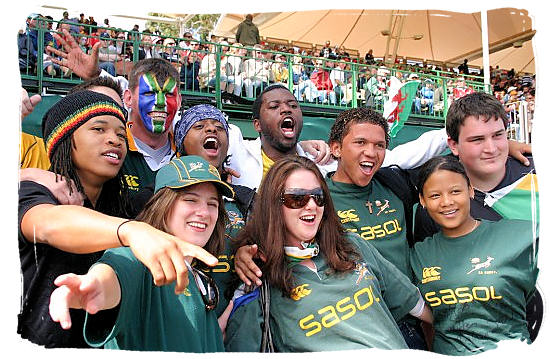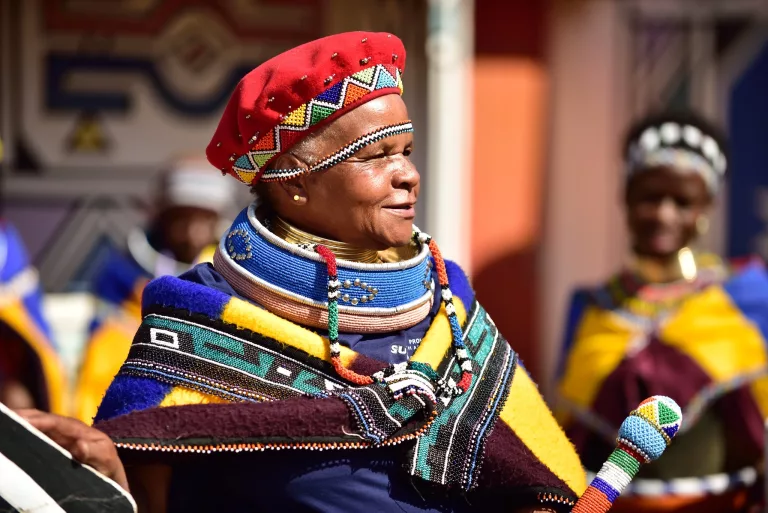The Definitive Guide to South African Culture Today
The Definitive Guide to South African Culture Today
Blog Article
3 Easy Facts About South African Culture Today Shown
Table of ContentsThe Only Guide for South African Culture TodayThe Definitive Guide to South African Culture TodaySome Ideas on South African Culture Today You Need To KnowThings about South African Culture TodayThe Ultimate Guide To South African Culture TodaySome Known Incorrect Statements About South African Culture Today
This adheres to with vocal singing and drum whipping. The bride and groom after that meet with the elders and speak about the value of their union. An issue of value in Zambian villages is the diing of enjoyed ones. All participants of the town placed cash, effort and time with each other for the funeral of the deceased.Throughout the mourning period; men stay outside your home and the women remain inside the residence of the deceased. After discussing the dead, the town walks to the location of burial to claim their last goodbyes. Music and dance is a very vital element of the Zambian culture. The different tribal units have their very own dance types; nevertheless, makishi is typical amongst all people.
South African Culture Today Fundamentals Explained
When it comes to music, drums are made use of the most, with a variety of drumming events. In Zambia, bulk of individuals are Christian; Protestant and Roman Catholic. There are little teams of Muslims and Hindus, with the remainder complying with neighborhood indigenous tribal ideas.

South African heritage and society is exceptionally varied, and consists of lots of different teams of individuals who each have their own traditions and beliefs. Having such a variety of individuals and societies is what makes South Africa so distinct. In truth feeling of the expression, we are a rainbow country.
Making it the 7th on the list of countries with the most Portuguese individuals in it outside of Portugal. Portuguese is not only a society, yet it is likewise a language and a citizenship. Portuguese individuals stem from the country of Portugal in Europe, nonetheless, due to Portugal (like numerous various other countries in Europe) checking out the world and conquering other countries throughout the 15th 20th centuries, South Africa has what we call Portuguese South African's living in it.
Things about South African Culture Today
Amongst the famous features of the topography is a plateau that covers practically two thirds of the center of the nation. The plateau facility rises towards the southeast, where it climaxes in the Drakensberg variety, part of a cliff that divides the plateau from the seaside areas. The Drakensburg includes Sparkling wine Castle, the highest height in the nation.
The region north of the Witwatersrand, called the bushveld, inclines downward from east to west towards the Limpopo River, which develops the worldwide border. The western section of the plateau, the middleveld, additionally comes down towards the west and differs in elevation in between the highveld and bushveld. Between the Drakensburg and the eastern and southern coastline, the land comes down to the sea.
Nearer the coastline there is a low-lying plain called the eastern lowveld. Southwest of the plateau the nation ends up being gradually more dry, paving the way to the stony desert of the Great Karroo, verged on the east by the lower, much better watered plateau of the Little Karroo. Separating the completely dry southerly inside from the sandy coastal of the southerly shore and West Cape is an additional range, the Langeberg.
The 5-Second Trick For South African Culture Today
The nation's racially, ethnically, and politically split background has actually created national and subnational icons that still work as icons of the nation, and others icons that are accepted just by particular teams. The monuments to white inhabitant occupation and political dominance, such as the Afrikaner Voortrekker ("pioneer") Monument in Pretoria and the Rhodes Monument recognizing the British colonial realm builder and Cape head of state Cecil Rhodes, stay sectarian icons.
The very first modern residents were the San ("bushman") hunter-gatherers and the Khoi ("Hottentot") peoples, who rounded up livestock (South African culture today). The San may have been present for thousands of years and left proof great site of their presence in countless old cave paints ("rock art"). Bantu-speaking clans that were the ancestors of the Nguni (today's amaZulu, amaXhosa, amaSwazi, and vaTsonga peoples) and Tswana-Sotho language teams (today's Batswana and Southern and Northern Basotho) moved down from east Africa as early as the fifteenth century

Both previous republics of the Orange Free State and Transvaal (South African Republic) were established by Afrikaner inhabitants that defeated and dispossessed the Basotho and Batswana. Lesotho would certainly have been by force integrated right into the Orange Free State without the expansion of British defense in 1869. The ultimate unification of the nation arised from the South African Battle (18991902) in between the British and the 2 Afrikaner republics, which reduced the country to mess up at the beginning of the twentieth century.
Afrikaners traditionally considered themselves the just true South Africans and, while giving full citizenship to all locals of European descent, denied that standing to individuals of shade until the democratic change of 1994. British South Africans keep a sense of social and social link to Great Britain without damaging their identification as South Africans.
Facts About South African Culture Today Uncovered
The variety and fragmentation within ethnic groups and the balance of stress between those groups throughout the twentieth century prevented interethnic civil dispute. While intergroup stress over resources, privileges, and political prominence remain, those problems are as likely to match Zulu versus Zulu as Zulu versus Xhosa or African against Afrikaner.
From colonial India, British merchants and administrators brought the curved metal ornamental roof coverings and slim shoelace work columns that still exemplify the outdoor patios of cottages arounds and cities throughout the nation. Residences of worship add an essential building aspect even in the smallest towns. In addition to the soaring steeples and classic stonework of Afrikaans Dutch Reformed churches, Anglican churches, synagogues, mosques, and Hindu temples offer selection to the religious architectural scene.

Butchering and the developing of typical grain beer are necessary in protecting the participation and goodwill of the forefathers that are thought about the guardians of good fortune, success, and wellness. Indian communities keep their native cooking practices and use them on Islamic and Hindu ritual and ritualistic celebrations. Afrikaners and Coloured individuals collect at weekend breaks and special occasions at multifamily barbecues called braais, where neighborhood bonds are reinforced.
Due to the fact that this was the main financial venture of both black Africans and white homesteaders, conflict in between those teams focused on the belongings of grazing land and animals. In 1867, check this site out the biggest diamond deposits worldwide were discovered at Kimberley in the west main location. The wide range from those areas assisted fund the exploitation click for info of the best gold reef on the planet, which was discovered on the Witwatersrand in 1886.
South African Culture Today for Beginners
This resulted in misconceptions and purposeful misrepresentation in the negotiations of white inhabitants and federal government authorities with African chiefs during the colonial period (South African culture today). In the facility of African reserves, some facets of public and chiefly "tribal count on" land tenure were preserved, and also in white rural locations, forms of common tenure were still exercised in locations with African areas
After the democratic improvement of 1994, programs for land restitution, redistribution, and reform were set up, however progression has actually been slow-moving. The white minority still controls eighty percent of the land. In the wake of farming land intrusions in Zimbabwe, the Division of Land Affairs has promised to speed up land redistribution.
Report this page